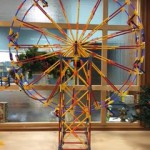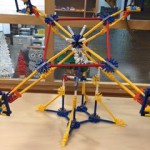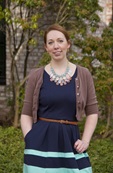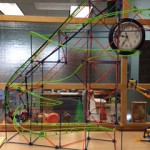“Doable” STEM
With growing recognition of its educational value, STEM programming has quickly become well-known and sought after for children of all ages, not to mention adults looking to learn more. Libraries working to meet the needs of their communities are constantly searching for new trends in the programs they offer. For most libraries, this program development process typically requires finding a balance with the cost of the program, the sustainability, interest and how “doable” it is for the librarian running it. An excellent example of sustainable and doable library program is a LEGO Club. They are fun, challenging for participants, require little preparation time and even libraries with no budget for purchasing LEGO kits can ask for donations from the community for their startup.
Why K’NEX?
First of all, I personally believe LEGOs to be a fantastic and fun learning tool. In my first position as a Youth Services Librarian I hosted a LEGO Club for both school ages and middle school children. However, when I came to serve the Butler community, I knew I wanted to be able to offer something a little different. When I started reading about K’NEX, I immediately became inspired.
The K’NEX company offers educational classroom kits for ages pre-k through high school. These kits are intended for medium to large group use and the directions allow every child to have something to work on or contribute towards. K’NEX go beyond providing general directions. They also provide teachers/librarians with guides including objectives, activities, key concepts, journals and worksheets.
 The benefits of building with K’NEX include:
The benefits of building with K’NEX include:
- engaging children in STEM-based learning through hands-on experience.
- offering a collaborative environment for learning.
- encouraging self-directed learning.
- providing access to equipment to inspire individuals developing new ideas.
- sharing resources and knowledge to allow kids to work on projects, network, and build.
- creating possibilities for a community of children who can teach each other, problem-solve together, and help each other through the inevitable frustrations and brick walls that come with trying to make something.
- creating the opportunity for kids to be engaged with the emerging trends in information, science, technology, engineering, mathematics and the arts.
- preparing children for a future in STEM careers.
Funding it
K’NEX are a little too pricey for my Library’s program budget so seeking outside funding was necessary. Our local junior women’s club raises money every year in order to help nonprofit organizations with special projects. I used this opportunity to go speak with them about library services, the benefits of STEM, and to ask for their support in this sustainable program. Because of this, we were provided with the funds to purchase so mewhere around 20 kits, each of which has multiple building options.
mewhere around 20 kits, each of which has multiple building options.
Consider writing your own proposal and reaching out to local organizations and businesses in your area. You could also seek out funding through grants or else purchase a few at a time through you own Library’s budget.
To learn more about K’NEX and their resources, visit http://www.knex.com/knex-education/.



